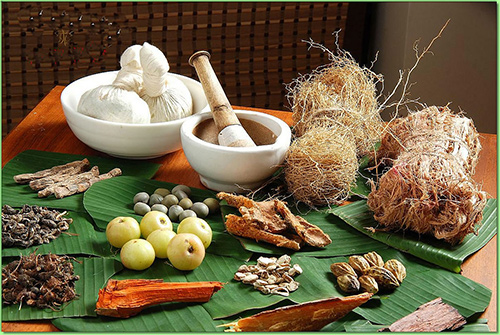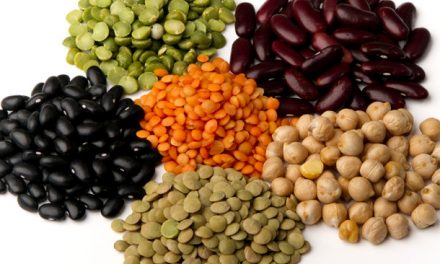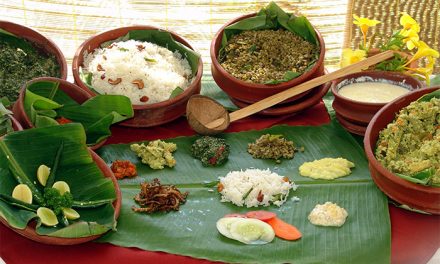The millennia-old medicinal practice of Ayurveda consists of various powerful branches. A very distinct one is the study and usage of herbs and plants, which is the basis for most the medicines and treatments in this life science. The basic idea of Ayurveda is the synergy of the human body with Mother Nature.
Herbs have profound preventive and curative properties, providing localized nourishment to targeted physiological systems and processes. Herbs are used for physical application in case of wounds, bruises, gashes or as oral medication or in food preparation. It is integrated into the diet depending on the needs of the ailment. There are over 600 original herbal formulas and around 250 single plant remedies that play a role in curing diseases, cleansing the body of impurities and toxins, boosting immunity and vitality among others.
[wp_ad_camp_1]
Basically Ayurveda focuses on harmonizing the mind, body and spirit in order to provide respite from maladies. Indeed the therapeutic effects of plants and herbs are limitless. Another advantage is that they have no harmful side effects on the body unlike drugs composed of chemicals. Ayurveda remedies are classified on the basis of their cures, for example pain relievers or anti-infection medication or immunity boosters.
Generally herbs are not considered singularly but as a compound formula which have synergistic effects on the body. Each herb adds to the other’s efficacy and makes the healing powers more potent. There are certain ancient Ayurveda cores like Triphala, Dashamula, Trikatu and others. Many new formulae have been developed as well in recent times by Ayurveda practitioners and herbal laboratories. Herbs are also taken with a special medium most of the time. This is known as anupana and includes ghee, milk, aloe gel or honey, which strengthen their properties and direct through action in the tissues.
From the days of yore there have been certain traditional herbs that stand out as the most popular. Here is some insight on six important herbs that every Ayurveda physician considers for health benefits of their patients:
1. Tulsi or holy basil:
Known in the scientific community as Ocimum sanctum, this plant is a sacred Hindu plant, commonly found in temple gardens and kitchen gardens. Its gorgeous fragrance unlocks the respiratory tract and enables the spirit to soar. Tulsi’s main compounds include eugenol and caryophyllene and it produces antipyretic, anti-inflammatory and analgesic actions. It is also found in African countries, where it is called fever plant as it helps one overcome sickness. Tulsi acts as an antifungal and antimicrobial agent against a host of pathogens like E coli and Candida albicans. It clears superfluous dampness in the lungs, increases lung capacity and reduces problematic breathing. Holy basil also alleviates stress from generalized anxiety disorder. It can be consumed in tea and food, as capsules or tonic or even in the raw form.
2. Haldi or turmeric:
This glowing yellow rhizome consisting herb known as Curcuma longa is one of Ayurveda’s greatest gifts. With its amazing healing and restorative properties, it has rich components like cucuminoids and curcumin which have diverse advantages. This includes sustenance of brain function, high oxidation activity, cancer and Alzheimer’s prevention and regulation of inflammation during malaises like rheumatoid arthritis. In fact unlike drugs like aspirin the anti-inflammatory booster doesn’t have side effects like gas. Its powder can be used in cooking and the extract can be consumed after meals.
3. Methi or fenugreek:
Scientifically named Trigonella foenum-graecum, it is used as a scented appetizer fenugreek eliminates the excessive vata dosha or wind humor in the body. It is great for digestion and is used for soothing irritation in Ayurveda. It has many qualities such as diminishing phlegm, curing fever and lowering cholesterol levels. It also has benefits for women such as aiding in lactation as well as uterus contraction. One of its most effective uses is as protection against alcohol induced liver damage. It also keeps blood sugar in check thus playing a credible role in diabetes control.
4. Ashwagandha:
The name Ashwagandha literally translates to strength of a horse. Also known as Withania somnifera, this exotic shrub has been in medicinal use for thousands of years in classical Ayurveda. It has four major therapeutic properties. These include medhya – promotes intellect and cognitive growth, balya – increases strength and stamina which aids recovery, rasayana – rejuvenation and life extensive properties and nidrajanana – meaning sleep inducer and combats insomnia as a body-balancing herb. It is superb for stress reduction, neural protection and preservation of the nervous system. It provides alternative treatment for diseases like Alzheimer’s and Parkinson’s.
5. Triphala (three fruits):
This herbal formula consists of three de-seeded myrobalans – Amalaki or Emblica officinalis, Bibhitaki or Terminalia bellirica and Haritaki or Terminalia chebula. The Triphala cocktail produces rich disease powerful acids like gallic acid, chebulagic acid and chebulinic acid. It is a great detoxifier and digestion corrector as it by promoting peristalsis and providing organ specific anti-inflammatory action in the lower GI tract. It is a good cure for food allergies, bloating, slow nutrient absorption, tiredness after meals and constipation among others. It is also used in curing eye diseases and hairfall.
6. Trikatu (three peppers):
This is a complimentary formula to Triphala and consists of a pungent, warming blend of three peppers – balck pepper (Piper nigrum), Indian long pepper (Piper longum) and ginger (Zingiber offocinale). It enriches the digestive fires (Agni) in the upper GI tract for assimilation and absorption of digestion. It also destroys the ama or accumulated toxins and debris that hinder proper digestion. It is also a potent carminative and anti-flatulent and is effective in dyspepsia. It greatly improves gastric functions.
Thus, Ayurveda has simple nature based solutions for a wide range of problems – from simple pimples to complicated cancers and tumors. The goodness in these ancient formulae is so evident that yet again they are resurfacing as the ultimate cures for illnesses and conditions. The true beauty of Ayurveda is that it provides a wide counsel on how life works best and bring forth abundant benefits for users.











Many many thanks for restarting sending of very useful and informative e mails on health and wellbeing. Please continue this good work.
We have ancient wisdom yet India is exporting and biggest consumer of English medicines.
it would be desirable which ayurvedic can be taken by whom , and who should not ; what is the quantity
that can be taken for different diseases and how many times in day and when ?
Thanks again for continuing with very useful posts on health and wellbeing.
The health benefits of Ayurvedic herbs are well known to people who have not yet become completely westernised. Many traditional households still use many herbs and other native remedies. Before the onslaught of allopathy with official patronage, we had separate shops selling many ingredients for native medicine in all towns
But today caution is required in speaking about Ayurvedic herbs. Most of the herbs are now grown commercially- which means with lot of chemical inputs, which interfere with and alter or reduce the original properties of the herbs. There were reports to this effect in the daily press recently.
One important requirement of Ayurveda is that we should consume foodstuffs and herbs which are grown in the area where we live, sharing our weather, climate , soil, water, etc. 50 years ago, I had seen Ayurvedic practitioners preparing medicine for each patient: for Ayurveda treats each person as unique, and prescribes remedies individually. Today Ayurvedic medicines are also standardised, and prepared for long shelf life and mass consumption. This I think is not in the spirit of true Ayurveda.